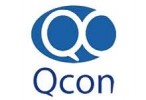
i
Afcons
Infrastructure
Proud winner of ABECA 2025 - AmbitionBox Employee Choice Awards
Filter interviews by
Afcons Infrastructure Safety Officer Interview Questions and Answers
7 Interview questions
The number of fall arrestors required depends on the specific work environment and tasks being performed.
Number of fall arrestors needed is determined by the number of workers at height simultaneously
Consider the length of the fall arrestor lanyard and the distance to the nearest anchor point
Ensure that each worker has their own fall arrestor for individual protection
A hazard is anything that has the potential to cause harm or injury to people, property, or the environment.
Hazard can be physical, chemical, biological, or environmental
Examples of hazards include fire, toxic chemicals, infectious diseases, and natural disasters
Hazards can be identified through risk assessments and safety inspections
Preventative measures can be taken to mitigate or eliminate hazards
Fire is a chemical reaction that releases heat, light, and various gases.
Fire is a rapid oxidation process that occurs when fuel (such as wood, paper, or gasoline) combines with oxygen and heat.
It produces flames, smoke, and heat that can be dangerous to people and property.
Fire can be caused by various sources, including electrical faults, cooking accidents, and arson.
Preventing fires and knowing how to respond t...
Safety refers to the condition of being protected from harm, injury, or danger.
Safety involves identifying and assessing potential hazards
Implementing measures to control or eliminate those hazards
Training employees on safe work practices
Regularly reviewing and updating safety policies and procedures
Examples of safety measures include wearing personal protective equipment, using safety equipment, and following est...
Scaffolding is a temporary structure used to support workers and materials during construction or maintenance of buildings or other structures.
Scaffolding is typically made of metal or wood and consists of platforms, braces, and supports.
It is used to provide a safe working platform for workers at heights.
Scaffolding must be erected and dismantled by trained professionals to ensure safety.
Examples of scaffolding i...
Different types of fire extinguishers include water, foam, CO2, dry powder, and wet chemical, each designed for specific types of fires.
Water extinguishers are suitable for Class A fires involving solid materials like wood or paper.
Foam extinguishers are effective on Class A and B fires, which involve flammable liquids like petrol or oil.
CO2 extinguishers are used for electrical fires (Class C) and flammable liqui...
Risk is the likelihood of a harmful event happening, hazard is a potential source of harm, and a near miss is a close call that could have resulted in harm.
Risk is the chance of a harmful event occurring, such as an accident or injury
Hazard is a potential source of harm, such as a slippery floor or faulty equipment
Near miss is a close call where an incident almost occurred but was avoided
Identifying and addressing...
Afcons Infrastructure Safety Officer Interview Experiences
2 interviews found
I applied via Recruitment Consulltant and was interviewed in May 2023. There were 3 interview rounds.

(4 Questions)
- Q1. What is risk ,hazard and near miss?
- Ans.
Risk is the likelihood of a harmful event happening, hazard is a potential source of harm, and a near miss is a close call that could have resulted in harm.
Risk is the chance of a harmful event occurring, such as an accident or injury
Hazard is a potential source of harm, such as a slippery floor or faulty equipment
Near miss is a close call where an incident almost occurred but was avoided
Identifying and addressing risk...
- Q2. About BOCW Act. about critical lifting
- Q3. Type of fire extinguisher and it use
- Ans.
Different types of fire extinguishers include water, foam, CO2, dry powder, and wet chemical, each designed for specific types of fires.
Water extinguishers are suitable for Class A fires involving solid materials like wood or paper.
Foam extinguishers are effective on Class A and B fires, which involve flammable liquids like petrol or oil.
CO2 extinguishers are used for electrical fires (Class C) and flammable liquids (C...
- Q4. How many of fall arrestor
- Ans.
The number of fall arrestors required depends on the specific work environment and tasks being performed.
Number of fall arrestors needed is determined by the number of workers at height simultaneously
Consider the length of the fall arrestor lanyard and the distance to the nearest anchor point
Ensure that each worker has their own fall arrestor for individual protection
(1 Question)
- Q1. About payment and facility of next company
I applied via Recruitment Consultant and was interviewed in Mar 2021. There was 1 interview round.
Interview Questionnaire
8 Questions
- Q1. What is fire
- Ans.
Fire is a chemical reaction that releases heat, light, and various gases.
Fire is a rapid oxidation process that occurs when fuel (such as wood, paper, or gasoline) combines with oxygen and heat.
It produces flames, smoke, and heat that can be dangerous to people and property.
Fire can be caused by various sources, including electrical faults, cooking accidents, and arson.
Preventing fires and knowing how to respond to the...
- Q2. Fire is chemical rejection of fuel with required amount of heat oxygen and this rejection heat and lite products
- Q3. What is safety
- Ans.
Safety refers to the condition of being protected from harm, injury, or danger.
Safety involves identifying and assessing potential hazards
Implementing measures to control or eliminate those hazards
Training employees on safe work practices
Regularly reviewing and updating safety policies and procedures
Examples of safety measures include wearing personal protective equipment, using safety equipment, and following establis...
- Q4. It is condition witch give you freedom from hazard risk accident witch my injury damage and lose to metriel or property damage and even death
- Q5. What is hazard
- Ans.
A hazard is anything that has the potential to cause harm or injury to people, property, or the environment.
Hazard can be physical, chemical, biological, or environmental
Examples of hazards include fire, toxic chemicals, infectious diseases, and natural disasters
Hazards can be identified through risk assessments and safety inspections
Preventative measures can be taken to mitigate or eliminate hazards
- Q6. Hazard is anything with has potential to harm
- Q7. What is scaffolding
- Ans.
Scaffolding is a temporary structure used to support workers and materials during construction or maintenance of buildings or other structures.
Scaffolding is typically made of metal or wood and consists of platforms, braces, and supports.
It is used to provide a safe working platform for workers at heights.
Scaffolding must be erected and dismantled by trained professionals to ensure safety.
Examples of scaffolding includ...
- Q8. It is temporary platform made for contraction to handling metriel and men
Interview Preparation Tips
Jub less
Top trending discussions






Interview questions from similar companies

I applied via Naukri.com and was interviewed before Aug 2020. There were 3 interview rounds.
Interview Questionnaire
2 Questions
- Q1. Intro, safety officer roles and responsibilities
- Q2. Co gas limit
- Ans.
The CO gas limit is the maximum allowable concentration of carbon monoxide in the air.
The CO gas limit is set by regulatory agencies to protect human health and safety.
The limit varies depending on the location and type of facility.
For example, the Occupational Safety and Health Administration (OSHA) has set a permissible exposure limit (PEL) of 50 parts per million (ppm) for an 8-hour workday.
In residential homes, the...
Interview Preparation Tips

Safety Officer Interview Questions & Answers
Shapoorji Pallonji Groupposted on 2 Nov 2021
I applied via Referral and was interviewed before Nov 2020. There was 1 interview round.
Interview Questionnaire
3 Questions
- Q1. About my Self
- Q2. Height work safety & Control measures
- Q3. Engineering control, legal control , administrative control, ppe
Interview Preparation Tips

Safety Officer Interview Questions & Answers
Kalpataru Projects Internationalposted on 19 Apr 2022
I applied via LinkedIn and was interviewed before Apr 2021. There were 2 interview rounds.

(3 Questions)
- Q1. Tell me about yourself.
- Ans.
I am a dedicated Safety Officer with a strong background in ensuring workplace safety and implementing safety protocols.
Experienced in conducting safety inspections and risk assessments.
Proficient in developing and implementing safety training programs.
Skilled in investigating accidents and incidents to identify root causes and prevent future occurrences.
Knowledgeable in maintaining safety records and ensuring complian...
- Q2. Nothing to said anything
- Q3. Nothing to said anything...
Interview Preparation Tips
- EHS Management

I appeared for an interview in Dec 2021.
Interview Preparation Tips

Interview Questionnaire
3 Questions
- Q1. What's Safety policy ?
- Ans.
Safety policy is a set of guidelines and procedures designed to ensure the safety of employees and prevent accidents in the workplace.
Safety policy outlines the responsibilities of employees and management in maintaining a safe work environment.
It includes procedures for identifying and reporting hazards, conducting safety training, and responding to emergencies.
Examples of safety policies include wearing personal prot...
- Q2. What's Height work ?
- Q3. What's Emergency plan ?
- Ans.
Emergency plan is a set of procedures and guidelines to be followed in case of an emergency or disaster.
It outlines the roles and responsibilities of individuals and teams during an emergency
It includes evacuation procedures, communication protocols, and emergency contacts
It should be regularly reviewed and updated to ensure its effectiveness
Examples include fire evacuation plans, severe weather plans, and active shoot...

Safety Officer Interview Questions & Answers
Shapoorji Pallonji Groupposted on 2 Nov 2021
I applied via Referral and was interviewed before Nov 2020. There was 1 interview round.
Interview Questionnaire
2 Questions
- Q1. Height work safety &Control measures
- Q2. Administrative control, Engineering control, legal control
Interview Preparation Tips

I applied via Recruitment Consulltant and was interviewed in Oct 2024. There were 2 interview rounds.
(2 Questions)
- Q1. What are precautions of work at height
- Ans.
Precautions for working at height include proper training, use of fall protection equipment, regular inspection of equipment, and securing tools and materials.
Ensure workers are properly trained on working at height procedures
Use appropriate fall protection equipment such as harnesses, lanyards, and guardrails
Regularly inspect all equipment used for working at height to ensure it is in good condition
Secure tools and ma...
- Q2. What are you know about lifting plan.
- Ans.
A lifting plan is a detailed document outlining the procedures and precautions to be taken when lifting heavy objects.
A lifting plan should include the weight of the object being lifted
It should specify the equipment to be used for lifting
The plan should outline the steps to be taken to ensure the safety of workers involved
It should also consider factors such as the location of the lift and any potential hazards
Regular...
(2 Questions)
- Q1. What is risk assessment
- Ans.
Risk assessment is the process of identifying, analyzing, and evaluating potential risks in order to determine the likelihood and impact of harmful events.
Identifying potential hazards and risks in the workplace or environment
Analyzing the likelihood of these risks occurring
Evaluating the potential impact of these risks on people, property, and the environment
Developing strategies to mitigate or eliminate these risks
Re...
- Q2. How to calculate capacity of wire rop sling
- Ans.
Capacity of wire rope sling can be calculated by considering factors like diameter, material, and configuration.
Capacity is determined by the breaking strength of the wire rope and the design factor used.
Calculate the breaking strength of the wire rope by multiplying the area of the rope cross-section by the tensile strength of the material.
Consider the configuration of the sling (single leg, double leg, etc.) and appl...

Safety Officer Interview Questions & Answers
Nagarjuna Construction Companyposted on 3 Sep 2023
I applied via Company Website and was interviewed in Aug 2023. There were 2 interview rounds.

(4 Questions)
- Q1. Tool box talk Hse policy Fire HIRA Permit to work Work at height Scoffolding
- Q2. PPE Hierarchy of control
- Ans.
PPE hierarchy of control involves prioritizing control measures to protect workers from hazards.
Elimination - Remove the hazard completely (e.g. using automated equipment instead of manual handling)
Substitution - Replace the hazard with something less hazardous (e.g. using non-toxic chemicals instead of toxic ones)
Engineering controls - Isolate workers from the hazard (e.g. installing ventilation systems)
Administrative...
- Q3. What is hazars ?
- Ans.
Hazards are potential sources of harm or danger that can cause injury, illness, or damage to property.
Hazards can be classified into different categories such as physical, chemical, biological, ergonomic, and psychosocial.
Examples of hazards include slippery floors, toxic chemicals, infectious diseases, repetitive motion tasks, and workplace stress.
Identifying and assessing hazards is crucial in developing effective sa...
- Q4. Hse plan Role and responsibilities
- Ans.
HSE plan outlines safety measures and procedures to ensure a safe work environment. Responsibilities include implementation, monitoring, and enforcement.
Developing and implementing HSE plans in accordance with regulations and company policies
Conducting risk assessments and identifying potential hazards
Training employees on safety procedures and protocols
Monitoring and evaluating safety performance
Enforcing safety regul...
Afcons Infrastructure Interview FAQs
Tell us how to improve this page.
Afcons Infrastructure Interviews By Designations
- Afcons Infrastructure Senior Engineer Interview Questions
- Afcons Infrastructure Planning Engineer Interview Questions
- Afcons Infrastructure QA QC Engineer Interview Questions
- Afcons Infrastructure Civil Execution Engineer Interview Questions
- Afcons Infrastructure Civil Engineer Interview Questions
- Afcons Infrastructure Site Engineer Interview Questions
- Afcons Infrastructure Store Keeper Interview Questions
- Afcons Infrastructure Civil Foreman Interview Questions
- Show more
Interview Questions for Popular Designations
Overall Interview Experience Rating
based on 3 interview experiences
Difficulty level
Duration
Safety Officer Interview Questions from Similar Companies
Afcons Infrastructure Safety Officer Reviews and Ratings
based on 16 reviews
Rating in categories
|
Senior Engineer
407
salaries
| ₹5 L/yr - ₹18 L/yr |
|
Planning Engineer
194
salaries
| ₹4.5 L/yr - ₹12 L/yr |
|
Executive Engineer
180
salaries
| ₹3.5 L/yr - ₹12 L/yr |
|
Civil Engineer
177
salaries
| ₹2.8 L/yr - ₹10.8 L/yr |
|
Assistant Manager
170
salaries
| ₹7.9 L/yr - ₹16.1 L/yr |

Tata Projects

Shapoorji Pallonji Group

Kalpataru Projects International

Nagarjuna Construction Company
- Home >
- Interviews >
- Afcons Infrastructure Interview Questions












